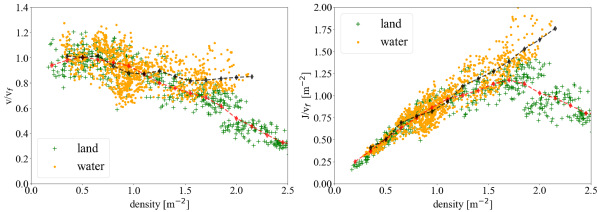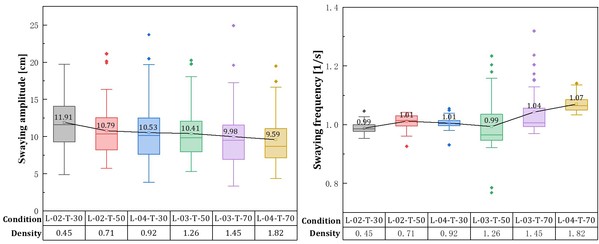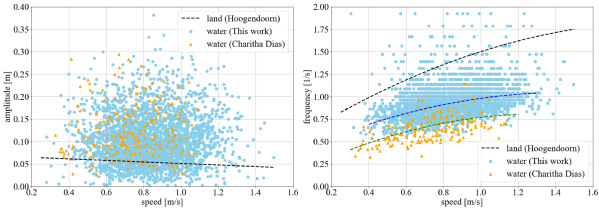Fundamental diagrams for straight movement of pedestrians in water

Problem & Motivation
1. Flood is one of the most destructive disasters in the world with high frequency, which normally results in considerable casualties and economic losses. Understanding the basic laws of crowd movement in water is helpful for establishing effective evacuation guidelines under floods.
2. However, there is a lack of empirical data and research on crowd movement in floods.
Methods
1. A series of experiments were carried out in an 8 m long corridor in a swimming pool with the depth of 0.60 m.
2. It is found that the free speed of pedestrians in water is 51.61% lower than that on land, and the male is +25% faster than the female. The speed-density relation shows two phases under the observed density range [0.30,2.20] ped/m^2. The speed firstly decreases with the increasing density and then stays at 0.81 m/s when the density exceeds 1.50 ped/m2, whereas the flow increases monotonically with the increase of density. The influence of water on speed and flow is emphasized by comparison with the fundamental diagrams on land. In water, the lateral swaying amplitude of crowds decreases with increasing density, but the swaying frequency remains around 1Hz. The swaying amplitude (the mean amplitude is 0.10 m) is 100% larger than walking on land (the mean amplitude is 0.05 m) under the speed range [0.50,1.10] m/s, and the crowd step frequency in water was 33.07% less than that on land.



Related Publication
Li Xintong, Yu Hang, Song Weiguo, et al. Fundamental diagrams for straight movement of pedestrians in water[J]. Safety Science, 2023, 159: 106018.
Download: [Paper]
Download: [Trajectory Data]

